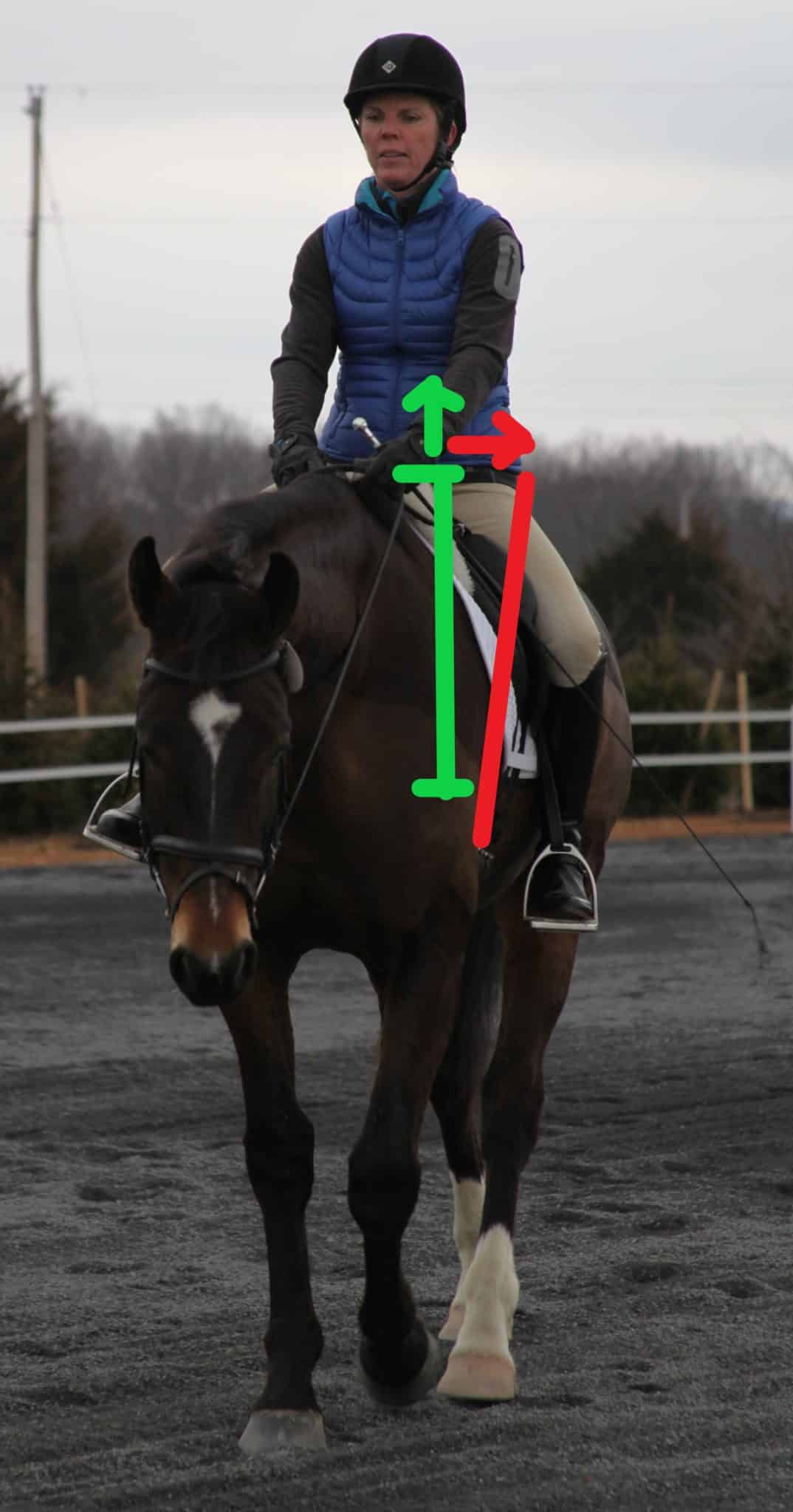
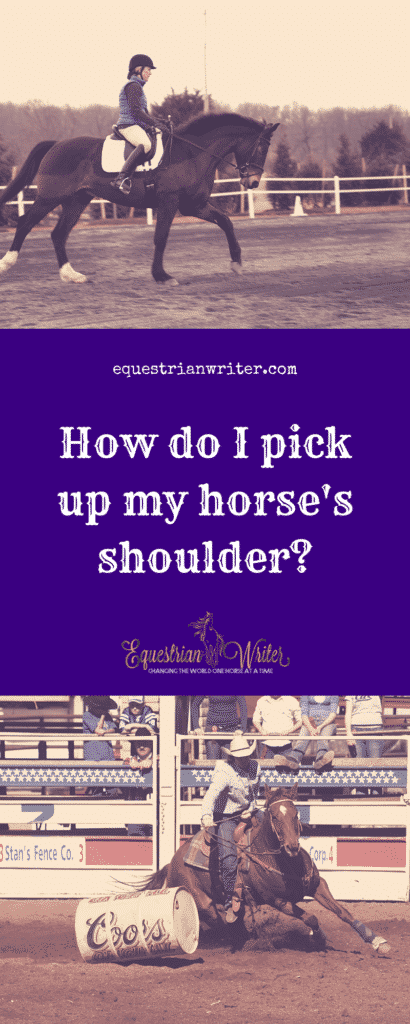
Do you have problems with picking up leads? Dropping leads? Lopsided circles? A horse that is heavy on the forehand? Do you know what all these problems have in common? A lack of shoulder control.
Picking up your horse’s shoulder is a vital piece of gaining full body control. Without full body control, you will never achieve proper balance and rhythm, both of which are required for collection.
Why does my horse drop his shoulder?
The most common culprit for dropping is the inside shoulder, especially through turns. If you watch horses in the pasture, they naturally run on the forehand and drop their inside shoulder. This isn’t a problem for a horse that is riderless. The problem comes when a horse is carrying the weight of a rider. Carrying a rider isn’t natural for a horse. It upsets their natural center of balance, hence the need for us to get them off the forehand. This shifts their center of gravity back onto their hindquarters to compensate for the weight of the rider.
When you ride through a turn, and the horse drops the inside shoulder, it feels like the floor just dropped out from under you. You lurch forward, and the horse unbalances further, falling harder on the forehand. This causes undue stress on the joints, and back that would not happen without the rider bearing down on the horse’s back. It becomes a matter of health and safety for both horse and rider.
Related Content: What is pressure and release training?
Some horses naturally do this worse than others. However, if your horse has this habit, it’s important to step back and evaluate why he might be doing this. The horse is probably doing it for a reason. Horses are creatures of self-preservation. Most of them aren’t going to randomly throw themselves off balance on purpose. So, why is he constantly dropping his shoulder? Probably because he’s trying to compensate for something else that is throwing him off balance.
The Mechanics of Picking Up the Horse’s Shoulder
Many view “picking up the horse’s shoulder” as a metaphorical term. Yes, you are lifting the horse’s shoulder, but you can’t actually pick it up like one might pick up a bucket. However, I find it easier to view “picking up the horse’s shoulder” in a very literal sense.
Imagine there is a solid bar running from your hand to the horse’s shoulder (Figure A). If you have you move your hand straight up from the neutral position, you pick up the bar, which lifts the horse’s shoulder. However, if your hand drifts away from the horse’s neck, the bar unhooks from the shoulder, allowing the shoulder to drop. This is a rather simplified analogy, but it gets across the fundamental mechanics.
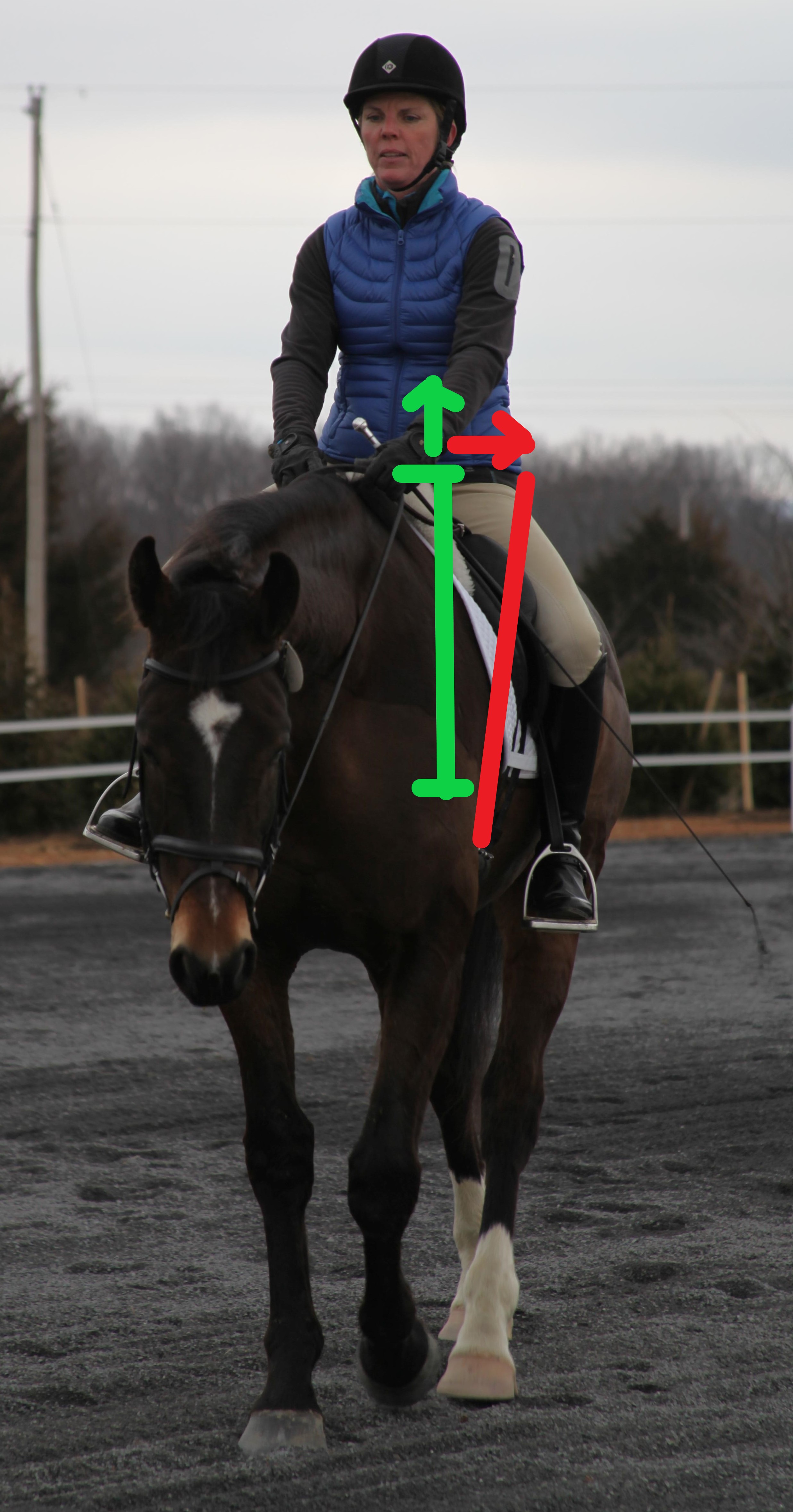
Of course, it’s not as easy as just picking up your hand. When your hand comes up, there must be a slight lift in your shoulder. The horse’s hips follow the motion of your hips, and the horse’s shoulders follow the motion of your shoulders.
Take a moment to simulate the motions of bringing your hand straight up from the neutral position and then horizontally away from the neutral position. You should notice the natural lift in your shoulder that comes when bringing your hand straight up. When your hand moves out horizontally, your shoulder naturally falls.
It is also important to pay close attention to your hips when doing this. If you’re like me and have a nasty habit of somehow dropping that inside hip while lifting the inside shoulder, you’ll just make the problem worse, not better. Your hip must stay level and out of the way so the shoulder can lift.
The Dangers of Overbending
When you turn, it’s instinctual to direct rein and pull the horse through the turn. This leads you to move your hand horizontally away from the neutral position (Figure B).
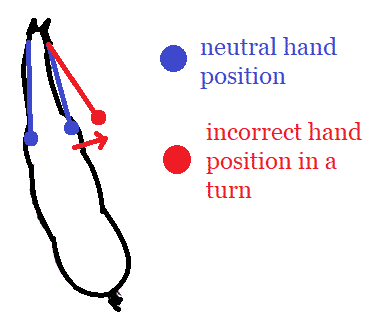
There is a fundamental flaw to this approach. Direct reining in this manner quickly causes the horse to over bend. The moment your horse overbends, he loses his balance causing his shoulder to drop. It doesn’t matter how balanced you are or how fit the horse is.
Prerequisites for the Horse
- lightness on the bit
- softness through the poll
- reliably and lightly moving off your leg
- consistent forward motion and rhythm at the walk and trot/jog
- straightness through the body
Prerequisites for the Rider
- a basic understanding of riding inside leg to outside rein, or, for western riders, properneck reining
Teaching Shoulder Control
Step 1: Get your horse soft
Run your horse through some basic softness exercises to be sure he is ready to work. Flex him at the poll to get him warmed up and double check that he will soften to the bit. Practice some walk-trot transitions check his ability to move off your leg and lightly come back into your hands.
Step 2: Establish a Circle
Once your horse is warmed up, put him out on a circle. Make at least a 20m circle so he is comfortable. A circle that is too small will only make it that much harder to keep that shoulder up. It’s best to start this exercise at the trot. More forward motion makes it easier to maintain rhythm and balance which is essential for picking up the horse’s shoulder.
Make sure you are riding your circle inside leg to outside rein (Figure C). If you have no idea what that means please go back and review the following two posts before continuing:
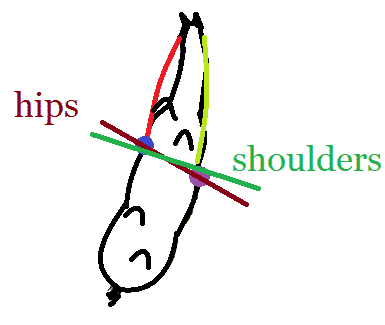
Left turn
Step 3: Lifting the Shoulder on the Circle
As soon as you feel the inside shoulder begin to drop, raise the inside hand slightly. Your inside leg should already be slightly further forward than the outside leg, so all you do, nudge the horse with the inside leg. Pulsate your calf against him and urge him to lengthen his stride with your seat. As soon as he picks up the shoulder, resume the neutral position and resume your circle like nothing happened.
Step 4: Picking Up Leads
Once you’ve mastered lifting the shoulder on the circle, it’s time to fix those leads. I prefer to start out picking up leads on a circle, but you can also do this in a straight line if you prefer.
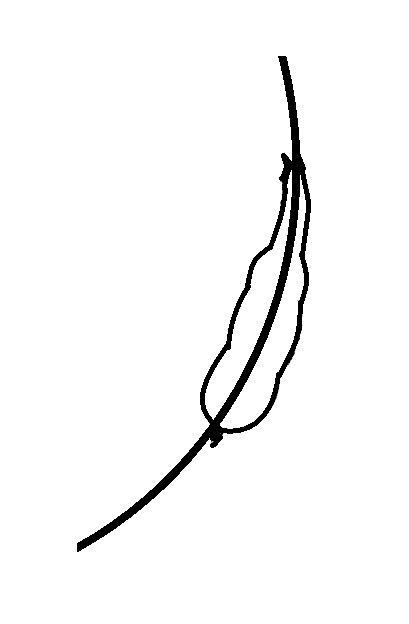
Normal bend on the circle
Let’s say you are going for a left lead departure. For a horse that drops the inside shoulder going into the lead, I find it works best to overexaggerate a bit. Use the outside (right) leg to push the hip further in (to the left) and put the inside (left) leg forward and really pulse that calf to get that inside (left) leg reaching forward into the transition.
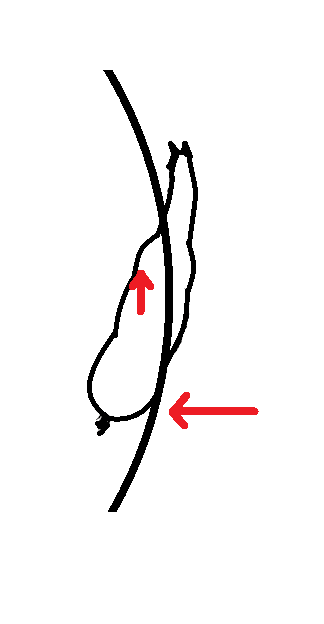
Lead departure correction
Related Content: The Secret to Simple and Flying Lead Changes
Step 5: Correcting Dropped Leads
Correcting dropped leads isn’t much different from correcting sloppy lead departures. When you feel the horse beginning to drop the lead, you put the outside leg back to push the haunches in, put the inside leg forward to encourage that inside leg to reach forward and lengthen the stride.
When working on these exercises, doing too many circles will sour your horse and only make his leads worse. Once both of you get the idea, start doing other things. Take note of situations where your horse normally drops his shoulder and be prepared. Don’t anticipate though. Anticipation will only encourage him to do it. Also, don’t preempt. Allow him to commit to the mistake before you correct him. Otherwise, you will constantly be applying leg to keep that shoulder up. It will become a crutch and he will fall apart the moment you take the crutch away. He needs to learn to hold his shoulder up on his own. When he drops his shoulder during other exercises, correct him and move on.
Common Rider Mistakes
1. Dropping your hip
If you’re anything like me, you might find yourself focusing so hard on controlling your legs and shoulders that you start dropping your hip. Some people drop the inside and some people drop the outside. Either way, keep a close eye on your hips. Make sure they stay level. Your horse’s hips follow your hips so if your hips are out of place his will be too. Your hips out of place will unbalance you and put his hips out of place will unbalance him. Him being unbalanced make the situation worse. In fact, this might even be the source of his problem in the first place.
Common Horse Mistakes
1. Bucking
Bear in mind this method involves putting your horse in a bind with only one way out, that way being to comply with your instructions. Some horses do not take kindly to this. If you do this too forcefully, the horse may get claustrophobic and buck. This is why it is important to ensure your horse is light and responsive before you attempt this and, if in doubt, abort the mission and get the horse settled down before attempting again. I recommend familiarizing yourself with the warning signs and proper emergency response to bucking before attempting any sort of horse training of this nature.
Like this blog post? Want a printable guide to go along with it? Supporters on Ko-fi can get the guide for FREE! Visit my Ko-fi page to claim your printable PDF guide!







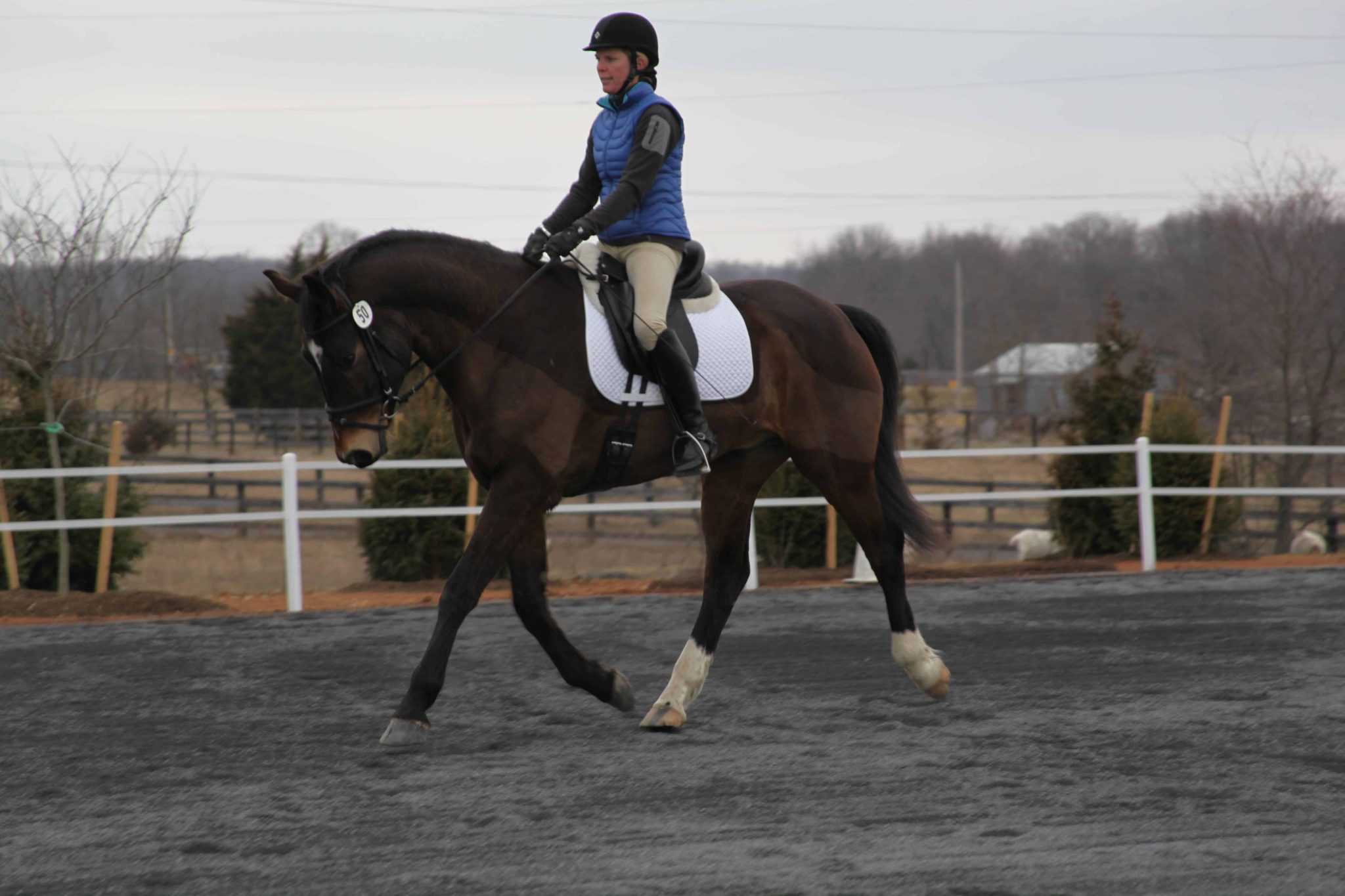
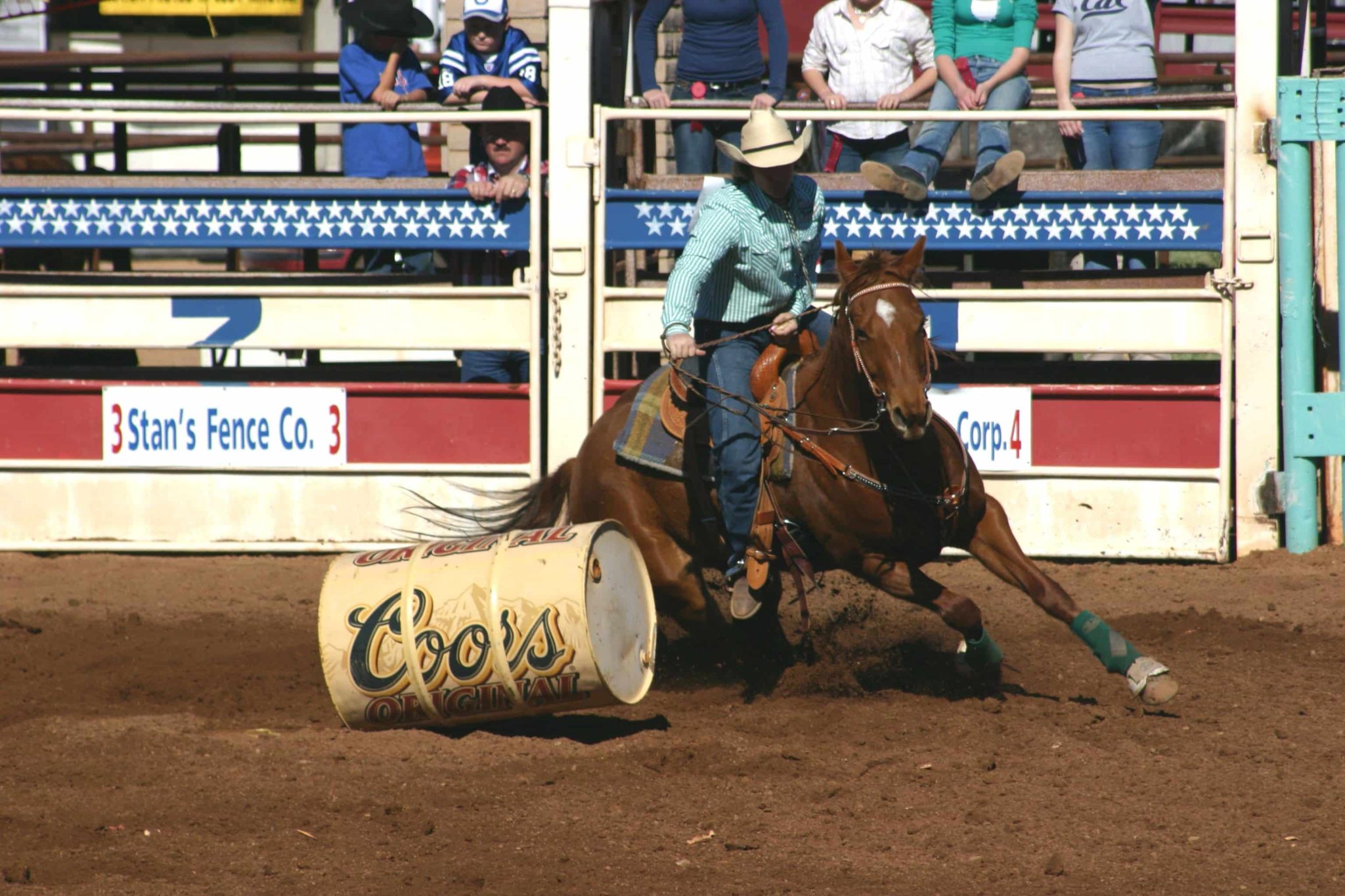
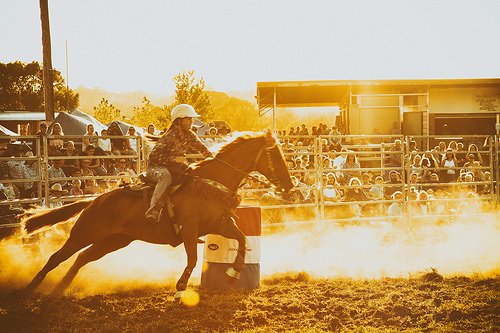
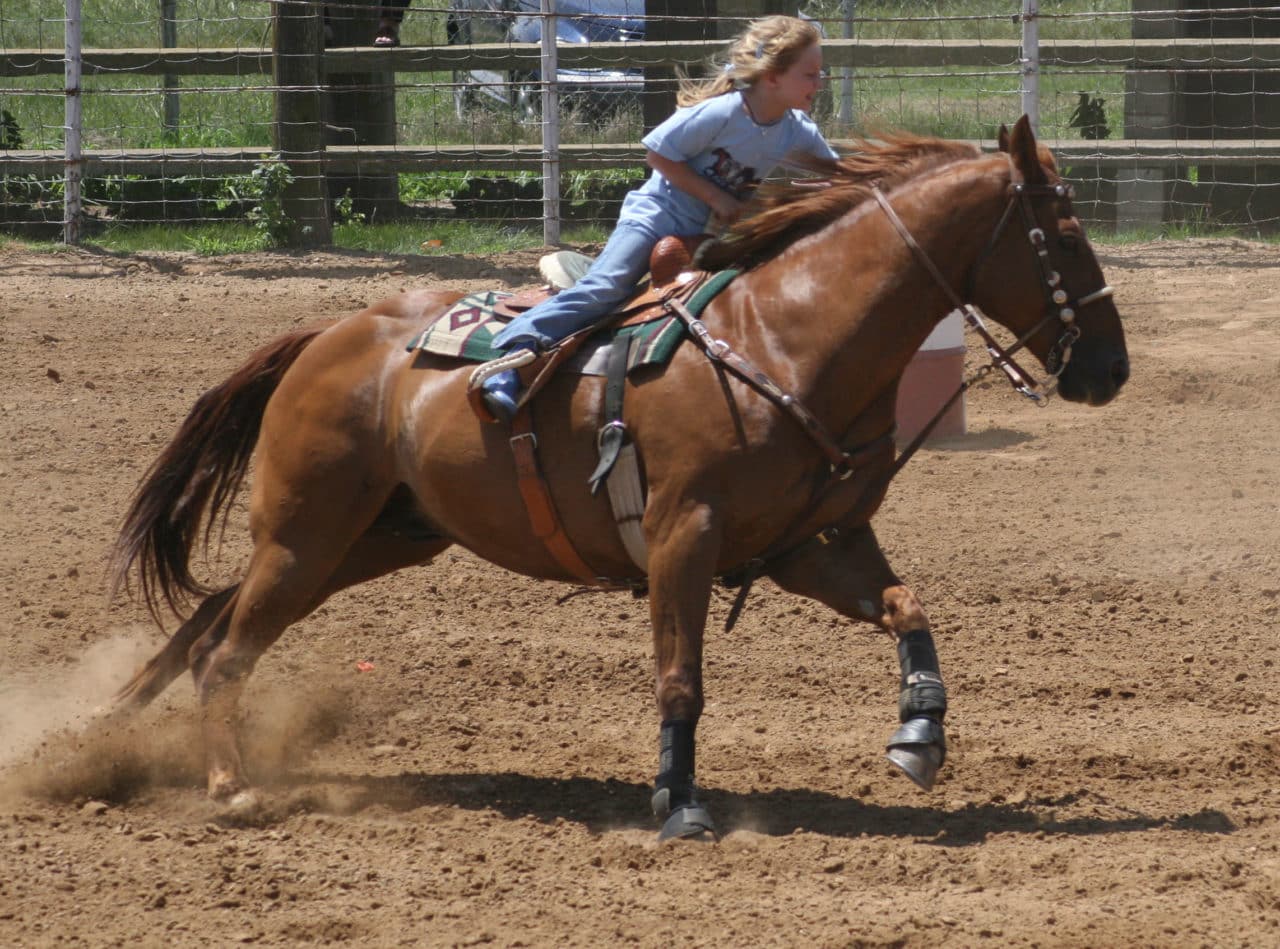
Wow this is exactly what I needed right now! Finally got a very stubborn horse to relax into contact but he now gets heavy on the forehand, I can’t wait to try this!
Good stuff. So, I’m assuming all leads are symmetrically identical? Also, dropping your hip is a pretty natural thing that all riders do. Otherwise, it would feel like a seizure.
Yes, both leads are symmetrically identical. And yes, dropping your hip is natural. Picking up your hip feels very weird at first and takes a lot of practice. You may need to overexaggerate at first, but really tone it down once you get that hang of it. Picking up your hip shouldn’t really be noticeable once you master it. Although, to be honest, I don’t think you ever really totally get used to doing it 100% of the time. At least I know I still struggle with it more often than I would like to admit. Practice, practice, practice. I’ve been practicing for several years and I still get it wrong some times so don’t feel bad if it takes a while to get the hang of it.